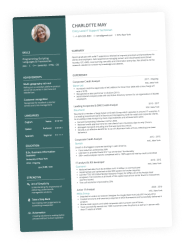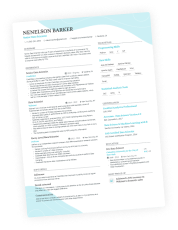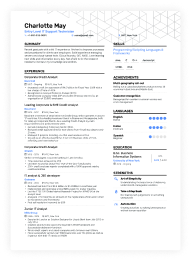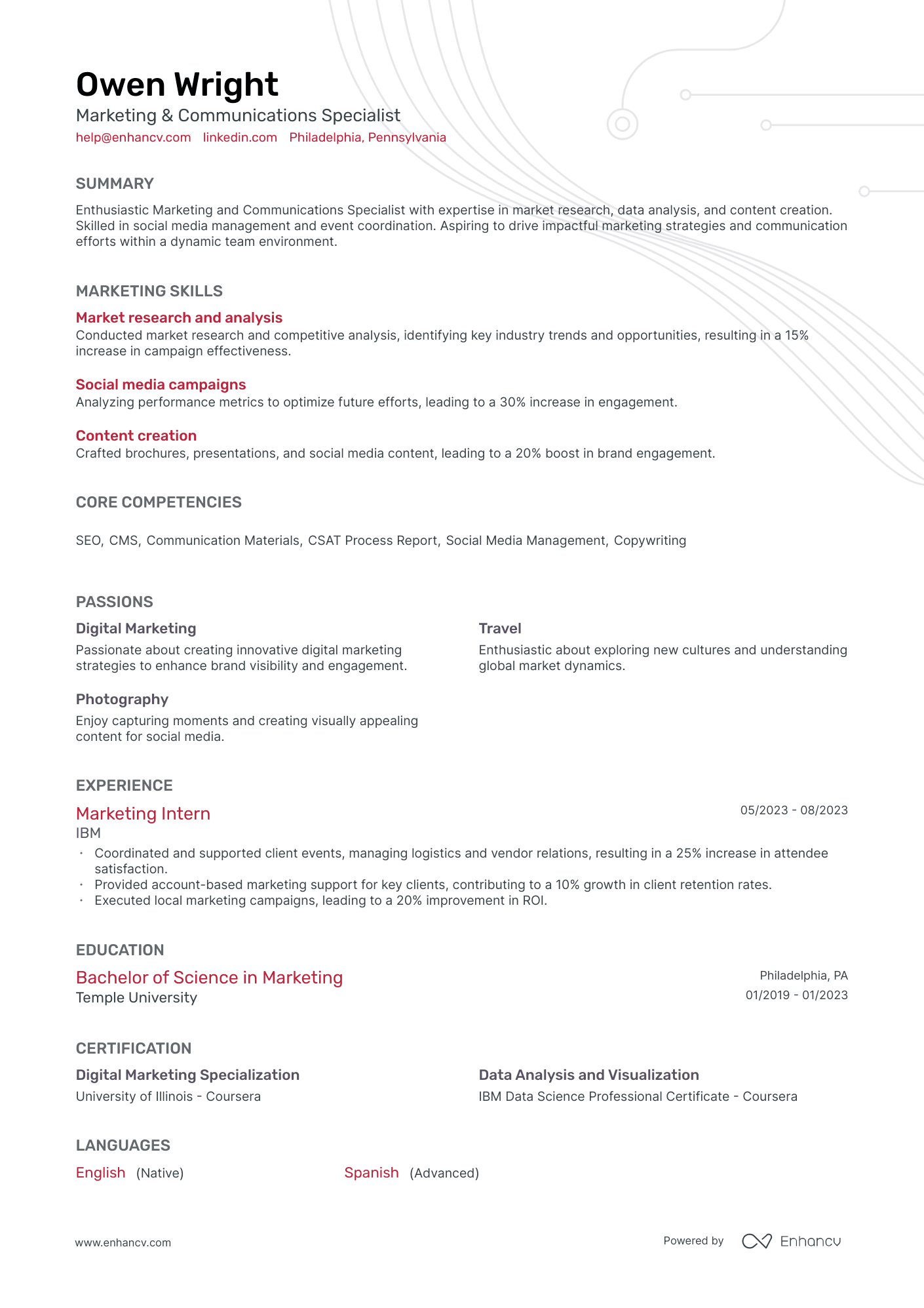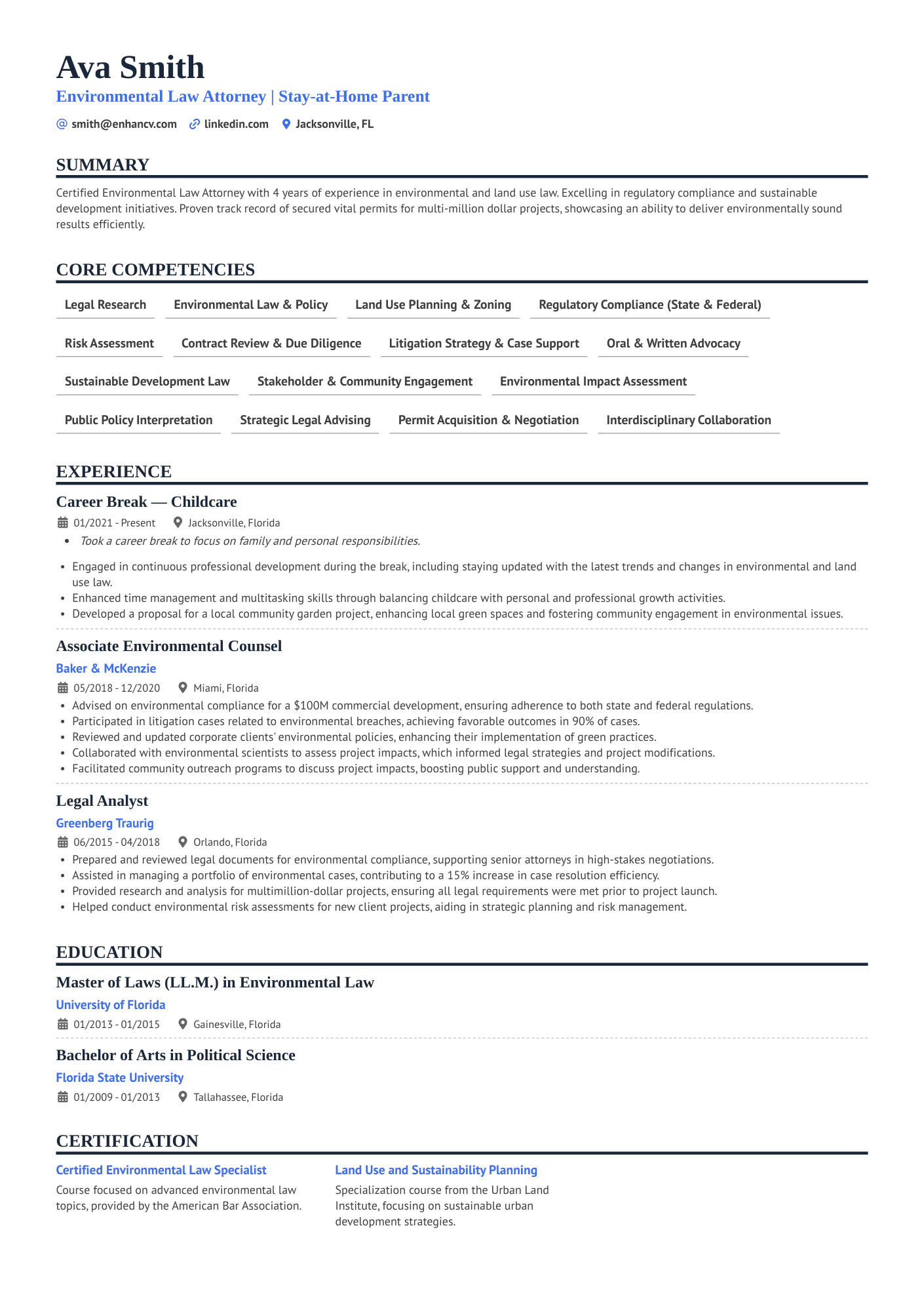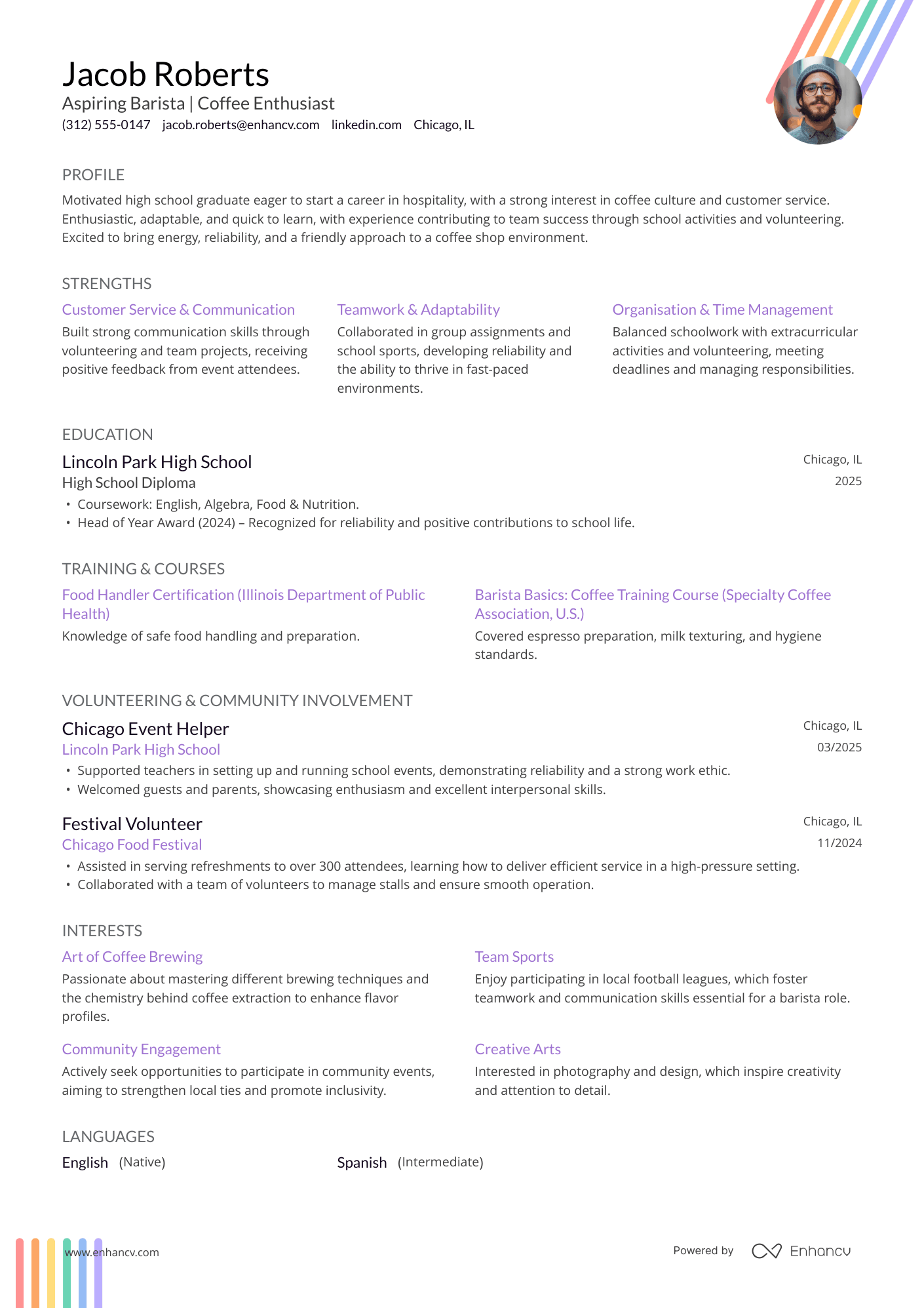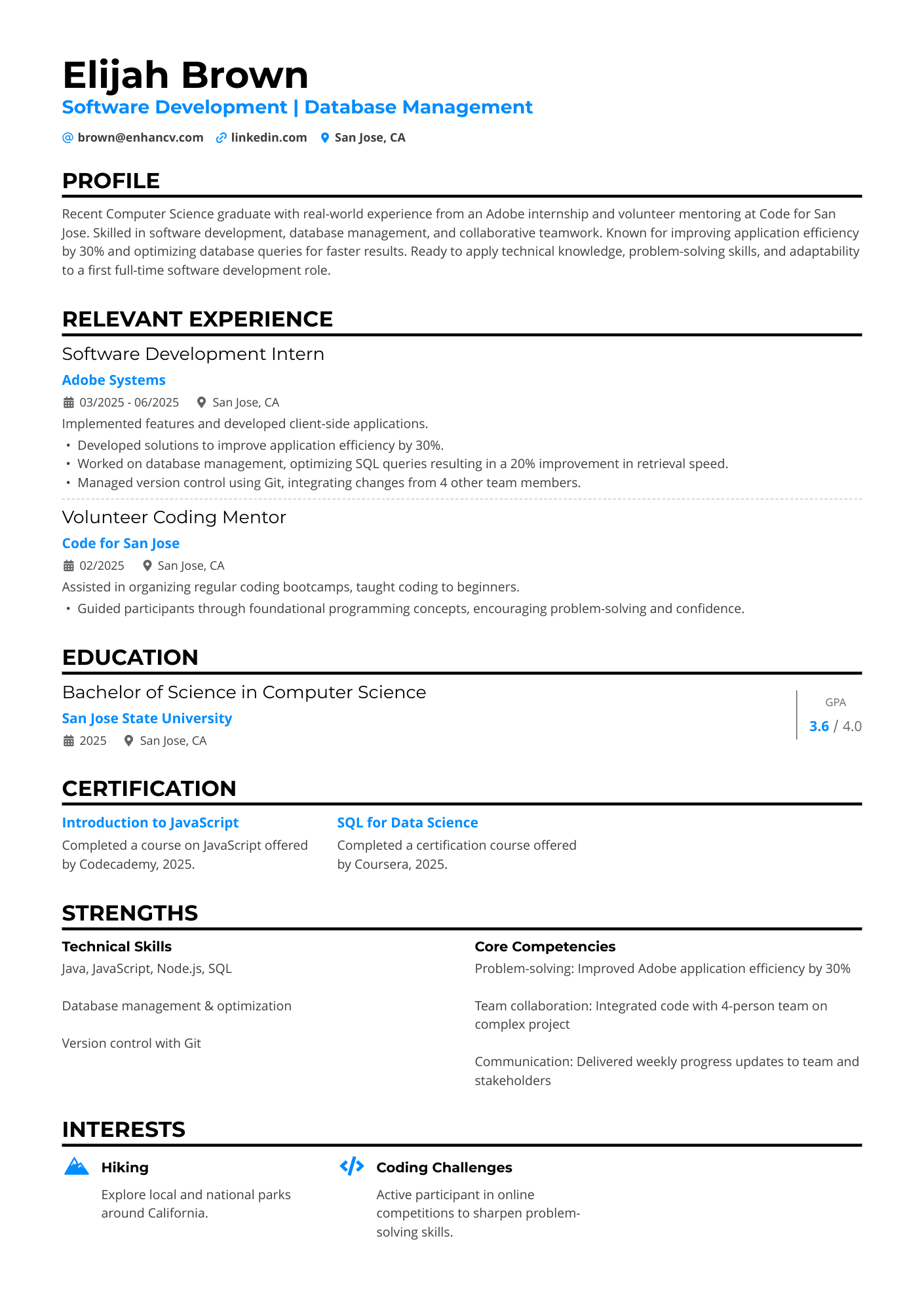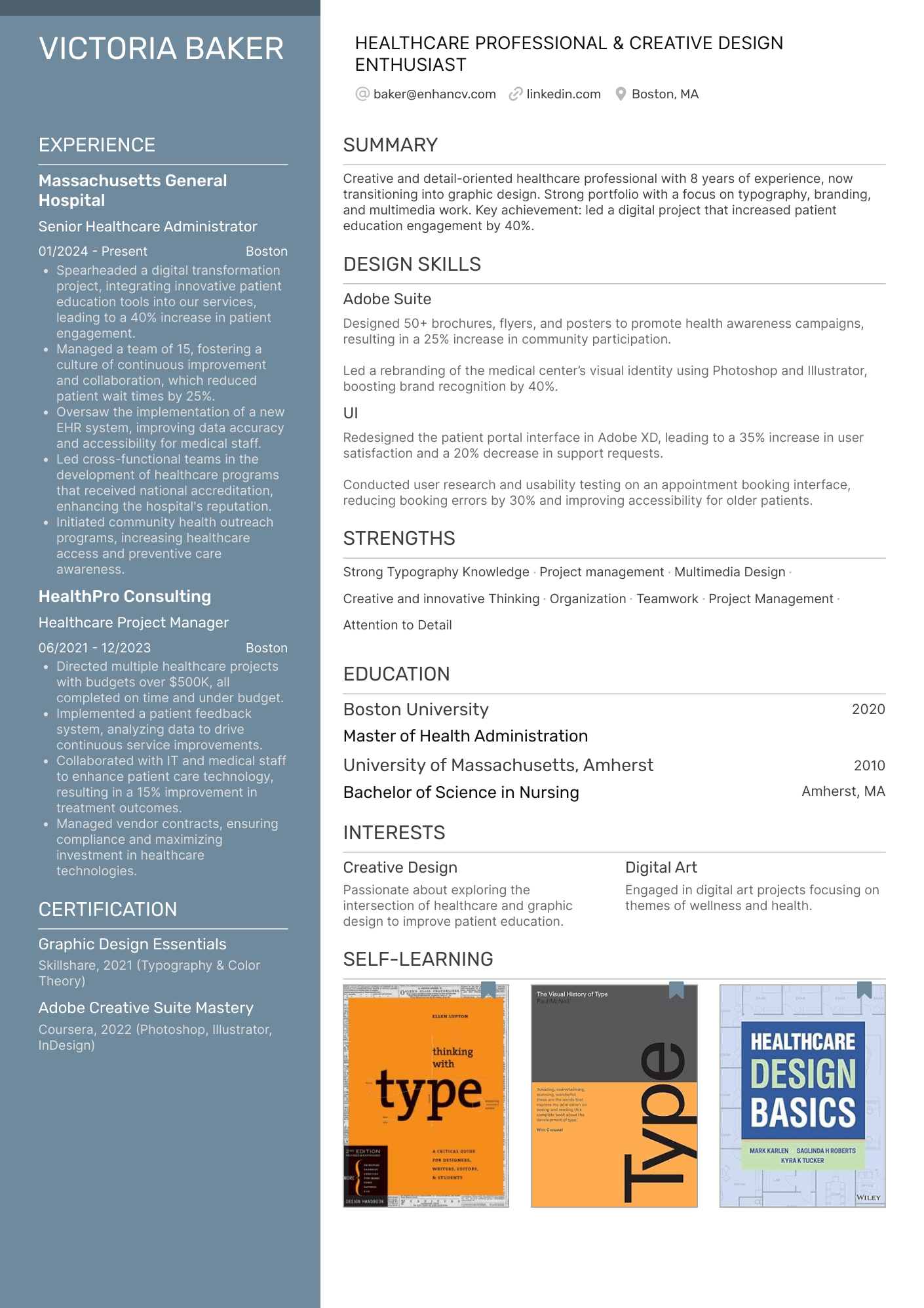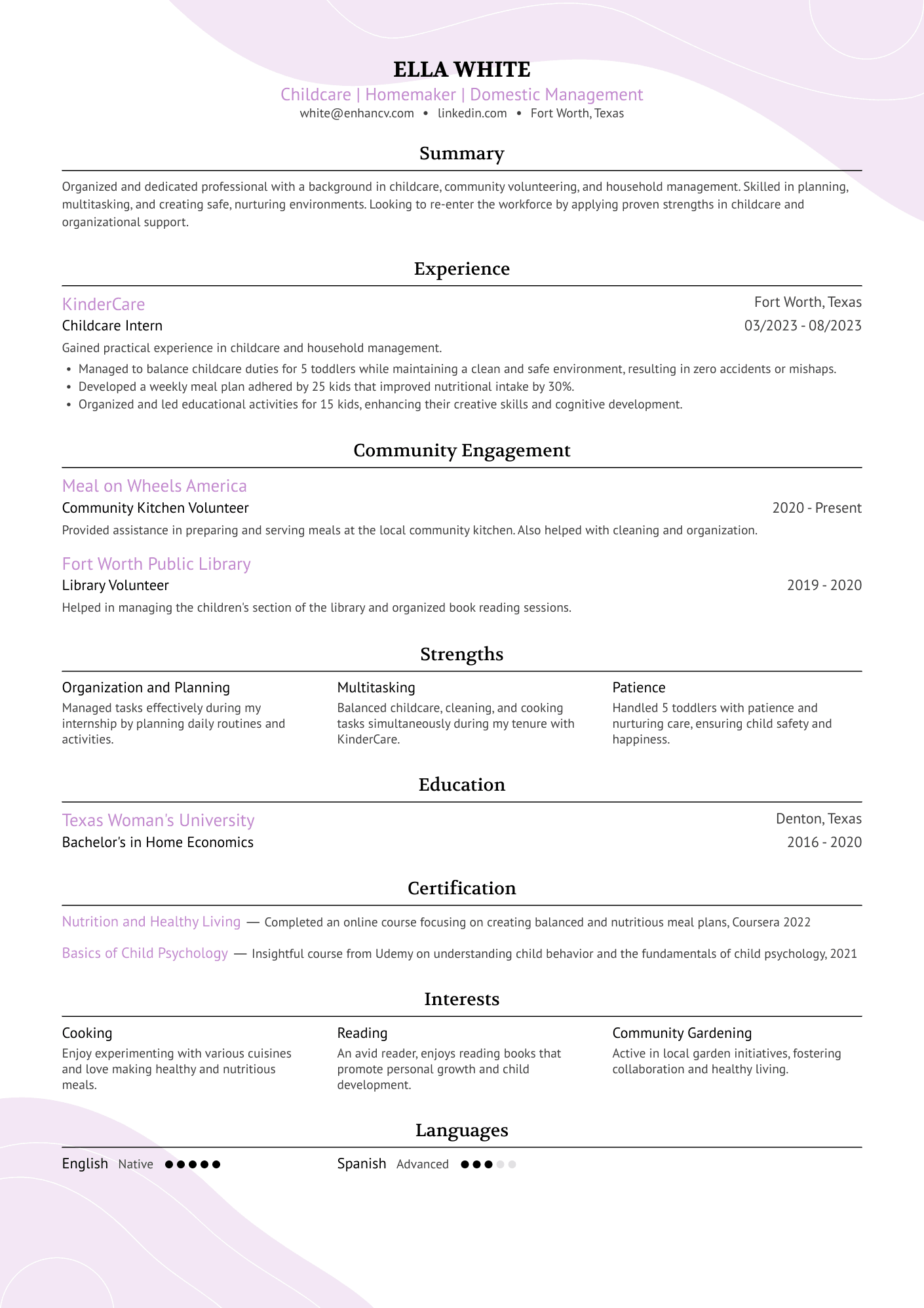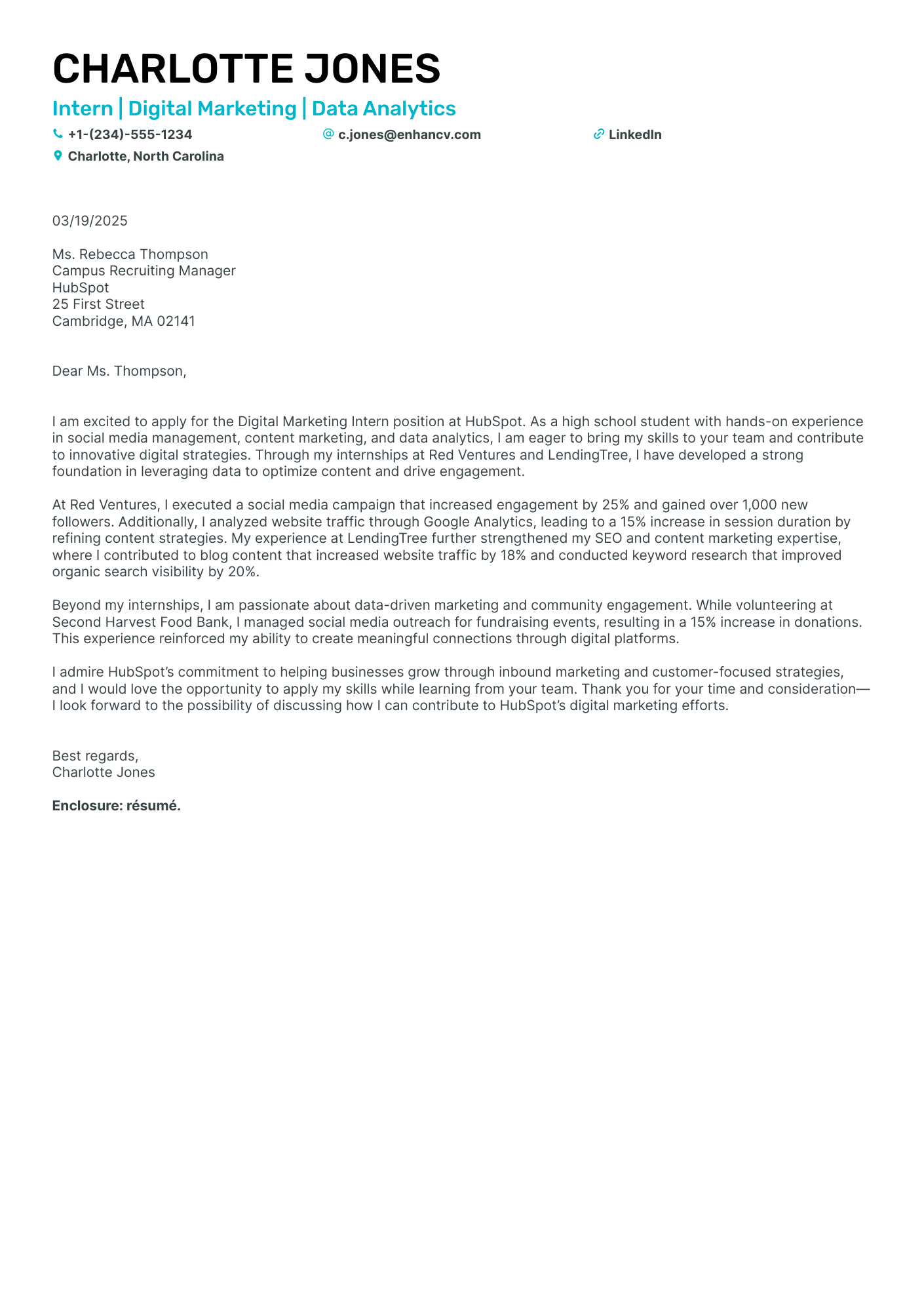So, you’re trying to write a resume with no work experience. That can feel intimidating, but it doesn’t mean you’re starting from nothing. Everyone has a first job, and employers know that. What matters is showing who you are, what you’re good at, and what kind of value you can bring to the table, even if you haven’t had a formal job yet.
This guide will walk you through the whole process: what to include, how to talk about school, volunteering, side projects—anything that shows initiative. You’ll learn how to structure your resume, highlight your strengths, and write something you’re proud to share.
Key takeaways
- A resume with no experience is still a resume—it should underscore transferable skills, education, training, and extracurriculars that prove you’re ready to contribute.
- Lead with relevant experience. Put school projects, internships, or community work above unrelated jobs to show immediate value.
- Use a functional or combination format to spotlight competencies and achievements, even if your job history is minimal.
- Write a clear, compelling profile that entices the recruiter to keep reading by connecting your strengths to the role.
- Add metrics (% improved, $ raised, # of people impacted) to turn skills into measurable proof.
- Prioritize relevance, clarity, and straightforwardness. Keep it one page, ATS-friendly, and easy for humans to scan quickly.
Let’s take it one step at a time.
What’s a resume without experience?
A resume without experience is a basic, personal information resume—a document built to spotlight who you are and what you can offer when a long job history isn’t an option. It’s the format designed for students, recent graduates, career switchers, or anyone stepping back into the workforce after a break.
The goal of this type of resume isn’t to hide the fact that you don’t have a job history. It’s to reframe your everyday experiences in a way that feels professional, relevant, and tailored to the role you want.
Situations where you’ll need a resume without work experience
There’s more than one way to have “no work experience.” Every path looks a little different, and your resume should reflect that.
Here’s who this guide is especially helpful for:
Common no-experience scenarios
| Career path | Why it matters |
|---|---|
| High school students and teens | Maybe you’re applying for your first part-time job, internship, or summer gig. You don’t have formal experience yet, but you’ve got school projects, extracurriculars, and plenty of potential to build on. |
| Recent college or university graduates | You’ve finished your degree (or are close), but haven’t worked in the field yet. We’ll show you how to describe academic work, transferable skills, and other things you might not realize count. |
| Career switchers | You’ve worked before—just not in the kind of job you’re aiming for now. This guide will help you reshape your resume to focus on skills and experience that carry over. |
| Work returners | Maybe you took time off for caregiving, illness, or something else personal. We’ll help you frame your return confidently, even if there’s a gap or your last job feels outdated. |
| People with informal experience | Freelancing, helping with a family business, running a YouTube channel, tutoring—it all counts when it’s framed right. You’ll learn how to translate this kind of experience into resume-ready material. |
Before you start building your resume with no work experience, it helps to understand what employers are scanning for. Knowing this shifts the focus away from what you don’t have and toward what you do bring.
What employers look for in a resume with no job experience
- Skills (soft + hard): Hiring managers want to see both practical abilities (like computer literacy or language skills) and personal strengths (like teamwork or communication). Together, these show how you’ll contribute on day one.
- Potential, attitude, and willingness to learn: Employers know you won’t have everything figured out yet. They care more about curiosity, enthusiasm, and the drive to pick things up quickly.
- Transferable experiences: Even if your background doesn’t come from a job, activities like volunteering, school projects, or leadership roles demonstrate qualities that translate directly into the workplace.
- Evidence and proof: Employers love specifics. Numbers, achievements, and real examples—even outside of work—prove that you’re reliable and capable of delivering results.
- Attention to detail: A well-tailored resume shows you’ve actually read the job description and adjusted your skills, examples, and language to match. This signals professionalism and tells the employer you care about the role they offer, not just any role.
Already have a draft started? That’s a great first step. But knowing if your resume actually hits the mark can be tricky when you don’t have much experience to compare it against.
Enhancv’s Resume Checker takes the guesswork out. It instantly reviews your draft, shows you what’s working, and highlights areas where you can make it even stronger.
Is your resume good enough?
Drop your resume here or choose a file. PDF & DOCX only. Max 2MB file size.
Now that you know what employers are looking for, it’s time to put those ideas into practice. The best way to do that is by building a clear, well-structured resume—even without employment history.
Let’s break down the essential sections you’ll need and how to make each one count.
What to include on a resume when you don’t have work experience
When you’re writing a resume without experience, it’s tempting to start by choosing a format—chronological, functional, or something in between. But here’s a better approach: first, gather your transferable experiences, skills, and achievements. Once you know what you have to showcase, it’s much easier to organize it into a layout that works.
We’ll talk about formats later in the guide. For now, let’s focus on the building blocks every strong resume needs.
1. Contact information
Keep your resume header clean and easy to scan. It’s the first credibility check.
Always include:
- Full name: Write the version you’ll use professionally. This helps recruiters match you across email or LinkedIn.
- Phone number: The fastest way to reach you. Use a U.S. format and set a clear voicemail greeting.
- Professional email: Firstname.Lastname is best. Avoid nicknames or school emails you’ll lose after graduation.
- LinkedIn or portfolio (optional but recommended): Proof you’re real and growing. Make sure the name, photo (if required), and details match your resume.
- Location: City + state is enough (no full street address).
PRO TIP
Double-check spelling and links—tiny errors here send the wrong signal.
Here’s what that looks like in practice:
Examples of contact information on a resume
| Bad example | Good example |
|---|---|
| Sammy “Ace” Johnson 555-1234 | 123 Maple Street, Apt 9 | gamer4life123@hotmail.com | Sam Johnson Entry-Level Marketing Assistant (312) 555-0189 | sam.johnson@email.com linkedin.com/in/samjohnson | Chicago, IL |
2. Professional summary or career objective
The top third of a resume is the first thing a recruiter reads, so it needs to be memorable. Think of it as your “trailer”—a short preview of who you are and what you bring, even if you don’t have work experience yet.
There are two main types of resume profiles we talk about in our industry:
- Career objective: Works best for high schoolor college students. It explains what you’re aiming for and how your strengths can help the company.
- Professional summary: A better choice if you’ve done projects, volunteering, or are switching careers. It highlights transferable skills and small wins you’ve already had.
PRO TIP
Traditional objective statements are rarely used anymore—they tend to feel outdated and overly self-focused.
Instead, give this section a title that fits your story, like Profile or Highlights (with Enhancv’s AI Resume Builder, you can rename any section to match your style). And if you’d rather not label it at all, that’s perfectly fine too.
Here’s what to keep in mind when writing your introduction:
- Do: Be specific and connect your skills to the job. Think about what the employer is asking for in the description and mirror that language.
- Don’t: Fall back on empty clichés like “hardworking and reliable.” They don’t show who you are or what makes you different.
- Keep it short: Usually, three to four sentences or a tight bullet-style list works best.
- How to start: Lead with your role or identity right now (“Recent graduate in biology…” or “High school senior with leadership experience…”). Then follow it up with a skill, achievement, or trait that matters for the role.
Check out the examples below:
Examples of resume profiles for people with no experience
| Bad example | Good example |
|---|---|
| Career Objective Hardworking and motivated student seeking a job to gain experience. | Profile College sophomore studying marketing with hands-on experience running social media for a student club. Skilled in Canva, Instagram strategy, and event promotion. Excited to bring creativity and teamwork to an entry-level marketing assistant role. |
Not sure how to phrase yours? Enhancv’s AI-powered summary generator can give you a head start.
Craft a summary that aligns with your dream job
Drop your resume here or choose a file.
PDF & DOCX only. Max 2MB file size.
3. Education section
If you don’t have work experience, your education is your biggest asset. It shows commitment, growth, and a foundation for the skills you’ll use on the job. That’s why most students or recent grads place this section right at the top of the resume, usually before Relevant Experience. Employers want to see it right away.
Below is the key information you need to include:
- School name and program: Be clear and write something like, “University of Illinois, B.A. in Psychology.”
- Graduation date: If you haven’t finished, say “Expected graduation: May 2026.”
- GED or high school diploma: If you completed a GED instead of traditional high school, list it the same way. Employers see it as an equivalent.
- GPA: Mention it only if it’s 3.5 or above (otherwise, leave it off).
- Honors & scholarships: Emphasize Dean’s list, academic awards, and scholarships that show achievement.
- Relevant coursework: Classes connected to the role (e.g., “Digital Marketing Strategy” for a marketing job) can help you stand out.
- Projects or capstones: List group projects, research papers, or case studies that demonstrate practical skills.
Stick with your highest level of education completed or in progress. If you’re in college, you don’t need to include high school.
Here’s how a weak and a strong education section can look:
Bad vs good example of an education section
| Bad example | Good example |
|---|---|
| High School Central High, graduated 2021 College Studying Business | B.S. in Business Administration University of Illinois | Expected: May 2026
|
What if you didn’t finish school?
That’s okay. Be upfront and list the program you started, along with the dates you attended. If you earned credits or completed relevant courses, add them. Employers value honesty—and showing that you’re still learning in other ways (like certifications or online courses) keeps your resume strong.
4. Relevant experience
Don’t let the word “experience” scare you. It doesn’t have to mean a formal job. For entry-level candidates, this section is where you collect all the practical experiences that show initiative, responsibility, and skills you can bring into the workplace. Employers care less about where the experience came from and more about what you did with it.
What counts as relevant experience?
If it helped you build skills, solve problems, or work with others, it belongs here.
That could include:
- Volunteering: Food banks, community events, nonprofit work, fundraisers.
- Extracurriculars & clubs: Student council, sports teams, coding clubs, debate, theater.
- School or personal projects: Research papers, science fairs, websites, podcasts, blogs.
- Internships: Paid or unpaid, even short-term placements or shadowing.
- Leadership roles: Event organizer, team captain, club officer, peer mentor.
So, how do you show all that on your resume?
Format this section with a clear heading like Relevant Experience, Projects & Activities, or Leadership & Volunteering—whichever best reflects what you’ve done.
Then:
- List each role or project with a title, place, and dates.
- Use bullet points starting with strong action verbs. (Enhancv’s bullet point generator is great at crafting clear and results-driven entries).
- Add results wherever you can—whether through numbers, outcomes, or recognition.
Use the STAR method for bullet points
The easiest way to write strong resume bullets is with the STAR method:
- Situation: What was the context or problem?
- Task: What were you responsible for?
- Action: What steps did you take?
- Result: What happened because of your work?
Example:
“Organized [Action] a fundraiser [Task] for the school debate club [Situation] that raised $1,200 and funded travel to competitions [Result].”
STAR-driven answers are usually powered by effective language. Don’t underestimate the value of sprinkling your first resume with action verbs. They highlight your soft skills and make your contributions stand out.
If you ever feel tempted to downplay what you’ve done, our action verb bank will help you express your strengths with confidence.
Just choose ones that best match what you actually did:
- Leadership & initiative: led, organized, coordinated, founded, directed, supervised
- Teamwork & support: collaborated, assisted, participated, contributed, supported
- Problem-solving & creativity: designed, created, improved, developed, launched
- Communication & outreach: presented, wrote, promoted, facilitated, advocated
- Results & impact: increased, reduced, delivered, achieved, raised, expanded
Finally, here’s a side-by-side look at a weak vs. strong experience section on a resume without work history.
Bad vs. good example of experience entries
| Bad example | Good example |
|---|---|
Volunteer Work 2023
| Relevant Experience Community Volunteer Springfield Food Bank | Summer 2023
Student Council Treasurer Central High School | 2022–2023
|
A similar contextualizing approach can be applied to your resume skills.
Let’s see how.
5. Skills section
This part of your resume is where you show employers what you can do. Even without job history, your skills prove you’re ready to contribute.
A strong skills section balances hard skills (things you can measure or test) with soft skills (the way you work with others).
- Hard skills: These are teachable and technical. Think software, tools, languages, or industry knowledge, like Microsoft Excel, Photoshop, Python, Spanish, and bookkeeping. These competencies prove you can handle specific tasks.
- Soft skills: These are personal and transferable. They show how you’ll approach work. Examples include teamwork, adaptability, problem-solving, leadership, and time management. Employers especially look for these when hiring someone with no experience.
Everything you should know about including skills on your resume
- Match your skills to the job description: If the posting highlights “customer service” or “Excel,” include those in your section, but only if you have them.
- Not every skill belongs in the skills section: Some, especially soft skills, work better when shown in action through your Relevant Experience or Education.
- Give context and results: Don’t just say “communication.” Show it:
“Presented a research project to 200 classmates.”
This makes your abilities more tangible.
- Lean on transferable skills: When you don’t have direct job experience, explain how your core competencies helped you reach goals in school, clubs, or volunteering.
- Keep it focused: Aim for six to ten of your strongest skills instead of listing everything you’ve ever done. A tighter list shows confidence and relevance.
Let’s see how it plays out on a resume:
Skills on a no-experience resume
| Bad example | Good example |
|---|---|
Skills
| Key Skills Technical
Soft Skills
|
Now that your skills are in place, let’s talk about another way to add credibility to a resume without experience.
6. Certifications and courses
Adding courses and certifications can be a real boost if you don’t have much work history. They prove you’ve invested time into learning skills that matter for the role.
Here’s how to list them properly:
- Course or certification name: Be specific (e.g., “Google Analytics Certificate,” “Intro to Python Programming”).
- Provider or platform: Employers recognize big names like Google, Coursera, LinkedIn Learning, Microsoft, or your university.
- Date completed (or in progress): Shows how current your knowledge is.
Tips for students and recent grads
- Don’t overload this section—list two to four courses that actually connect to the job you’re applying for.
- Place it after your education or skills section so it feels like a natural extension of your learning.
- Ongoing courses can be listed too—just add “In progress” next to the title.
Look at a side-by-side comparison between a bad and a good example of a certifications section:
Courses and certifications on a no-experience resume
| Bad examples | Good examples |
|---|---|
Courses
| Certifications & Courses Google Analytics Certificate | Google, 2023
Introduction to Python Programming | Coursera, 2022
|
You might be asking yourself: Where should certifications go on a resume without experience?
You have three main options:
- If the course is highly relevant to the job (e.g., “Google Data Analytics Certificate” for an entry-level data analyst role), place it right after your Education so employers see it quickly.
- If it’s useful but not central to the role, keep it below your skills section as a supporting detail.
- If you only have one short course, you can mention it inside your skills section instead of creating a whole new section.
Ongoing courses can still be listed, just add “In progress” so recruiters know you’re actively learning.
6. Languages, awards, and additional sections
These extras aren’t mandatory, but they can give your resume more personality and proof of effort. Think of them as the “bonus features” that set you apart when everyone else looks the same on paper.
Here’s what you can include:
- Languages: Show proficiency levels clearly (Fluent, Conversational, Beginner).
- Awards & honors: Scholarships, competitions, and leadership recognition.
- Hobbies & interests: Only list them if they connect to the role or show valuable qualities (e.g., writing for a blog, coding side projects, and leading a sports team).
- Other extras: Public speaking, published work, and certifications outside your field if they demonstrate initiative.
Below is an example of the dos and don’ts of putting additional information on a resume:
Additional sections on a no-experience resume
| Bad example | Good example |
|---|---|
What I’m good at
| Additional Information Languages
Awards
Hobbies & Interests
|
The strong example works because everything is organized, relevant, and backed up with context—not just tossed into a single line.
When it comes to formatting, clarity beats creativity. Section titles like “What I’m Good At” may sound fun, but they often confuse applicant tracking systems. In the next section, we’ll look at how formatting choices can make your resume both recruiter-friendly and ATS-proof.
Which resume format works best without experience?
Even the strongest resume content can be overlooked if it’s not organized in a way that recruiters (and software) can quickly process. That’s why your layout and structure matter just as much as what you write. A clear, consistent format makes your resume easy to scan for humans and ensures it’s correctly read by applicant tracking systems (ATS).
Why layout and formatting matter for ATS
If you’re applying for jobs online, chances are your resume will go through an applicant tracking system before a human recruiter ever sees it. ATS is like a filter that scans your resume for keywords from the job description.
What to be careful about:
- Formatting traps: Fancy fonts, tables, graphics, and images can sometimes make your resume unparseable.
- Keyword matching: If the job description says “customer service,” but your resume only says “client support,” ATS might not recognize the match. Always mirror the wording (truthfully).
- File type:Save your resume as a PDF unless the employer requests Word. Avoid JPEG/PNG or scanned images.
Do all employers use ATS?
Not always. Big companies and job boards almost always use them, but smaller local businesses often don’t. Still, it’s safest to assume your resume could be scanned.
When should you expect it?
- Online applications through job boards (Indeed, LinkedIn, Glassdoor, etc.)
- Large corporations or companies with high-volume hiring
- Government or formal internship programs
Choosing the right resume format without experience
There’s a common misconception that ATS only favors reverse-chronological resumes (work-history-first approach) and rejects combination or skills-based formats. While the reverse-chronological format is the easiest for both humans and ATS to scan (and the quickest to reveal gaps), functional and combination resumes aren't automatically rejected.
In fact, most entry-level candidates use a functional or combination resume.
Here’s why:
A functional (skills-based) resume puts your skills at the center of attention. You may not even have work history yet, or it could be minimal—what matters is that you have the right transferable skills that can get you started.
Check out this functional resume example:
The hybrid resume gives equal weight to skills and experience. It emphasizes competencies but also includes a clear timeline in your education and work history sections. It’s a smart choice if you have at least some job, internship, or volunteer background to show alongside skills.
Here’s an example:
How to decide which format to choose:
- If you’re relying mostly on skills and transferable experiences, go with a functional resume.
- If you have some prior work history to balance with your competencies, a combination resume is your best bet.
When you’ve settled on the right format, it’s time to focus on the organizational details that make your resume easy to read and professional-looking:
- Keep it clean and simple:Stick to one page, choose a clear font, and leave enough white space. Clutter makes a resume overwhelming.
- Use standard section headings: Labels like Skills, Education, or Experience help both recruiters and ATS software find what they need quickly.
- Stay ATS-friendly: Skip text boxes, graphics, and unusual formatting that can confuse scanning systems. Unless an employer asks otherwise, save your file as a PDF.
- Use design elements sparingly.A touch of color or a simple icon can help your resume stand out, but don’t overdo it. Readability always comes first.
Next, let’s walk through examples of resumes with no experience to see how these tips work in practice.
Examples of resumes with no experience
Seeing real examples is the fastest way to understand how everything fits together.
Below, you’ll find sample resumes for different types of candidates who are starting out with little to no formal work history. Each one uses the same building blocks—education, skills, and relevant experiences—but organizes them in slightly different ways depending on the person’s background.
High school student resume
This resume shows how everyday experiences—from school events to food safety training—build transferable skills. By tying interests like coffee brewing and team sports directly to the barista role, it makes the resume both professional and personal.
Note on photos
While photos aren’t typically standard on U.S. resumes, in customer-facing roles like hospitality, a professional, friendly headshot can sometimes work in your favor. It reinforces approachability, warmth, and personality—qualities that matter just as much as technical skills when dealing with customers.
If you choose to add one, keep it simple, professional, and welcoming.
College student or recent graduate resume
The college resume below highlights an internship and volunteer work while backing them up with certifications.
It balances academic background with hands-on experience, showing that classroom learning translates into real results. The GPA signals strong academic performance, the internship demonstrates technical impact, and the grouped skills with context prove readiness for a first full-time role.
Career changer resume
The resume above shows transferable skills, while giving concrete proof of design ability through portfolio pieces and UI/UX outcomes. The certifications establish formal training, and the added books section reinforces a growth mindset as the candidate pivots into graphic design.
Work returner resume
This resume reframes time as a stay-at-home mom into a period of growth, highlighting skills like organization, multitasking, and patience. It also underlines measurable impact in childcare and community roles, demonstrating readiness to re-enter the workforce with confidence.
Use these as inspiration, not as templates to copy word-for-word. The key is to adapt the structure and language to your own story so your resume feels authentic and professional.
How to еxtract and present “non-work” experience
If you look back at the resume examples above, you’ll notice that each one’s been rearranged or even renamed sections to bring their strengths to the front. That’s the key—customizing your resume so your story shines.
Here’s how to do it yourself:
Non-work experience checklist
- Audit your own life. Think beyond jobs. Have you volunteered? Led a school project? Helped run a family business? Managed a household as a stay-at-home parent? All of these can be reframed as transferable experience.
- Structure mini-project descriptions. Treat each example like a small project. Start with the problem, explain the action you took, and highlight the result. This is how the high school and college resumes turned everyday activities into proof of leadership and problem-solving.
- Quantify whenever possible. Numbers add weight. Did you plan meals for 25 children? Lead a fundraiser that raised $1,200? Grow social media engagement by 35%? Measurable impact instantly feels more professional.
- Practice storytelling. Use verbs that show initiative: organized, created, launched, improved, delivered. In the earlier examples, notice how volunteering and internships were written with action-driven bullet points that make achievements clear.
Sometimes the hardest part is figuring out how to put what you’ve done into “resume language.”
Let’s take a look at an informal bio from a high school graduate applying for a summer retail job:
- Helped my aunt with her thrift store on weekends.
- I’m good at math, got a B+ in Algebra II.
- Part of the school soccer team, I was team captain this year.
- Babysit my younger cousins sometimes.
- Good with people, friends always say I’m friendly.
Pretty normal, right? But here’s how to turn this into resume-ready content that shows transferable skills.
First retail job resume
| Polished resume sections |
|---|
EDUCATION Lincoln High School | Dallas, TX
RELEVANT EXPERIENCE Thrift Store Assistant
Babysitter2024 - Present | Dallas, TX
|
So you can see how a few casual notes quickly transform into a resume with clear, meaningful sections. Everyday activities—like helping at a store, babysitting, or playing sports—have been reframed using action verbs and measurable details.
Most importantly, the skills that matter for a retail role are brought to the front, making it easy for hiring managers to spot them right away.
The more you tailor your experiences and describe them with results, the more your resume looks like it belongs alongside applicants with formal work history, even if your path has been different.
Now, let’s dive into some smart optimization strategies to make your resume stand out—even without prior experience.
How to optimize a resume for ATS if you have no experience
ATS scans resumes for keywords from the job posting, and if those role-specific terms and phrases aren’t there, your application might not get through. That’s why keyword optimization is critical, especially when you don’t have direct work experience.
How to identify relevant keywords
If you’re applying online—through job boards or company portals—assume ATS is part of the process.
- Read the job posting carefully: Highlight repeated words or skills (e.g., “SEO,” “JavaScript,” “team collaboration”).
- Check company websites: Job pages, “About Us,” and values statements often include terms you can mirror.
- Look at multiple postings for the same role: If the same terms appear often, they’re likely essential.
How to rework transferable skills to match those keywords
Use the key terms naturally across different sections of your resume:
- Summary/Profile: Tailor it to echo the role (e.g., “Enthusiastic customer service student with volunteer experience”).
- Skills: Match technical and hard skills directly to the job ad.
- Education: Include coursework relevant to the role (e.g., “Introduction to Data Analytics”).
- Experience (work, volunteering, projects): Use keywords to describe what you did: “Organized community event improving engagement by 30%.”
How to polish your keyword-rich resume
Once you’ve tailored your resume with the right keywords, take the extra step to test it before you send it.
Editing with fresh eyes is key:
- Read your resume alongside the job posting: Make sure the most important competencies and responsibilities from the ad appear naturally in your resume.
- Use an ATS checker tool: Tools like Enhancv’s ATS Resume Checker run multiple tests (up to 16 different categories) to ensure your resume is 100% parseable and aligned with job keywords.
- Aim for balance: Keywords should fit smoothly into your sentences. Avoid “keyword stuffing,” which looks forced to recruiters even if it passes software.
By editing carefully and running your resume through an ATS checker, you’ll know it’s not only well-written but also fully optimized to get through automated filters and land in front of real recruiters.
Is your resume good enough?
Drop your resume here or choose a file. PDF & DOCX only. Max 2MB file size.
Additional ways to add value when applying with no experience
Your resume is the centerpiece of your application, but it’s not the only piece of the puzzle. When you don’t have much formal experience, the supporting materials you include can help fill in the gaps and strengthen your application.
Tell a compelling story in your cover letter
A cover letter is a chance to reinforce and expand on your resume. For candidates without prior experience, creating the habit of writing a short, tailored letter for each job can make a huge difference.
Instead of repeating what’s already in your resume, use the cover letter to build on it:
- Share a quick story that connects your skills to the role.
- Highlight your enthusiasm for the company or industry.
- Point out transferable experiences that don’t fit neatly into bullet points.
For beginners, this habit is especially important. Each letter is a chance to show employers that you’re not just sending out applications blindly—you’ve thought about why you want this job and what you can bring to this team.
This is what a strong cover letter can look like, even if you’ve never had a full-time job before.
A lean, well-written cover letter makes your resume stronger by adding context, personality, and intent.
Drop your resume here or choose a file.
PDF & DOCX only. Max 2MB file size.
Create a consistent portfolio to showcase your work
Not every portfolio has to be full of professional work.
For students or beginners, it can be as simple as:
- School projects: a marketing plan, a coding project, a research presentation.
- Personal projects: a blog, a YouTube channel, a graphic design you made for fun.
- Volunteer work: flyers designed for a community event, lesson plans created for tutoring.
A portfolio gives recruiters something tangible to explore beyond your resume. Place the link right in your header for maximum visibility, and always double-check that it’s clickable across devices before sending your application.
At the entry level, a portfolio can sometimes carry even more weight than your resume—because it shows your skills in action. Even if your GitHub or design portfolio is still growing, put effort into curating it as thoughtfully as possible. Keep it clean, organized, and focused on your best work.
And if you can use the same visual style as your resume, even better. It creates a consistent, professional impression that sets you apart.
Author’s take
Here are three tips on putting together your creative work:
- Use free platforms like Behance, Canva, or Adobe Portfolio.
- Curate three to five strong pieces instead of uploading everything.
- Add short captions such as what the project was, what tools you used, and what impact it had.
Build a professional online presence
In today’s job market, your professional online presence is often the first impression employers get—sometimes even before they open your resume. If you haven’t created these accounts yet, now is the time.
A simple, work-related digital profile helps recruiters see your potential, even when you don’t have much formal experience.
Here’s where to start:
Your LinkedIn profile is basically an online version of your resume, but more flexible. It matters because many recruiters search LinkedIn first. Without a profile, you might not show up at all.
Best practices
- Mirror your resume’s education, skills, and volunteering.
- Add a professional photo—clear, friendly, and approachable.
- Write a short About Me, summarizing your career interests and goals.
- Connect with classmates, teachers, mentors, and colleagues to build your network.
- Put your LinkedIn URL in your resume header, right after your email address.
Got a LinkedIn profile but no professional resume yet? Enhancv’s LinkedIn Resume Builder can create one for you in minutes.
GitHub
For aspiring developers, a GitHub profile is often more powerful than a resume alone. Employers want to see code in action, how you approach problem-solving, and whether you can collaborate through version control.
A clean, active GitHub shows that you’re serious about coding, even if your experience comes mainly from school or personal projects.
Best practices
- Upload real work: Add class projects, personal apps, coding challenges, or open-source contributions. Even small projects show growth and initiative.
- Keep it organized: Write clear README files, use meaningful commit messages, and structure folders logically. Messy repos signal poor attention to detail.
- Show your progress: Don’t worry if your projects aren’t perfect. Employers like seeing improvement over time. Just avoid leaving half-finished code without context.
- Pin your best projects: Highlight the ones that best represent your skills and are most relevant to the jobs you’re targeting.
- Collaborate when possible: Contributing to group projects or open-source repositories demonstrates teamwork and familiarity with Git workflows.
A well-curated GitHub shows that you understand documentation, organization, and collaboration, which are just as valuable to employers.
Personal website or blog
For students and entry-level candidates, a personal website shows initiative, creativity, and digital literacy—qualities that help you get noticed even without formal experience.
Best practices
- Keep it simple: One page with an About Me, a portfolio or project section, and contact information is enough to start. Overcomplicating it can distract from your strengths.
- Be consistent: Use the same tone, fonts, or color palette as your resume for a unified personal brand. It shows attention to detail.
- Highlight your best work. A focused showcase looks more professional than uploading everything you’ve ever done.
- Make it easy to navigate: Use clear headings and short sections so employers can find what they need quickly.
- Keep it fresh: Update your site as you learn new skills or complete projects. Leaving outdated work at the top can send the wrong message.
Your website doesn’t have to be fancy. Even a clean, single-page site built with free tools like Wix, Carrd, or WordPress gives recruiters a reason to remember you.
PRO TIP
When adding links to your resume, remember that LinkedIn, GitHub, or a portfolio site aren't the same as personal social media. Employers expect to see your professional work, not your summer vacation photos or casual posts. Accidentally linking to the wrong account can backfire and leave a poor impression.
Keep your resume links clean, relevant, and consistent. Over time, this practice will help you build a personal brand that feels intentional and trustworthy.
What to do before you send your resume
Before you send off your resume, run through this short checklist to make sure it’s polished, professional, and easy for recruiters to review.
Quick resume-building checklist
- Use a professional template: Start with a clean, one-page design that ensures consistent formatting and avoids layout mistakes. Enhancv’s simple templates are ATS-friendly and included in the 7-day free plan.
- Check for ATS readability: Avoid tables, images, or unusual fonts that can confuse applicant tracking systems. For best results, run your resume through Enhancv’s Resume Reviewer.
- Proofread twice:Typos and inconsistencies (like mixing “Sept” with “September”) can hurt your credibility. Read it out loud or ask a friend to review it.
- Tailor it to the job: Your summary, education, and experience should emphasize the skills most relevant to the role. Cut filler phrases, and make sure every claim is backed by evidence.
- Rely on experts, not guesswork: Use a trusted resume builder like Enhancv or seek professional advice, like from your school career counselors. Avoid generic tools or large language models for your final draft—they often miss context and produce cookie-cutter content.
- Test your links: Double-check that your LinkedIn, portfolio, or GitHub links open correctly and look professional on both desktop and mobile devices.
- Export as a PDF: Unless the job posting requests otherwise, send your resume as a PDF. It preserves your formatting so nothing shifts on another device.
- If submitting in person, print smart: Use U.S. letter format and good-quality paper. A sharp, professional printout makes a strong first impression at a local store or coffee shop.
What NOT to do when crafting a resume with zero experience
Even if it’s your first resume, you can still avoid the most common pitfalls.
Here are the mistakes beginners make, why they happen, and how dodging them makes your resume stronger:
Being too vague
- Why it happens: Students often feel they don’t have “real” experience, so they fall back on generic lines like “good communication skills.”
- How to avoid it: Recruiters see this everywhere. Instead, give context: “Presented a research project to 200 classmates and faculty.” This turns a vague soft skill into proof.
Over-padding with unrelated items
- Why it happens: First-time job seekers want to fill the page, so they include hobbies or part-time tasks that don’t connect to the job.
- How to avoid it: Employers would rather see fewer, relevant details than a cluttered list. Stick to transferable experiences (school projects, volunteering, leadership roles).
Poor formatting or typos
- Why it happens: Students often rush or don’t realize resumes follow unspoken rules (consistent spacing, one page, simple fonts).
- How to avoid it: A single typo or messy layout signals carelessness. Find a reliable resume-checking tool because clean formatting shows professionalism, even before they read a word.
Using bland or passive language
- Why it happens: Without job history, candidates default to safe verbs like helped or assisted.
- How to avoid it: Passive phrasing hides your contribution. Opt for strong verbs (organized, created, improved) that show ownership and impact, which recruiters remember.
Relying completely on ChatGPT (or other AI tools)
- Why it happens: Writing a first resume feels intimidating, so it’s tempting to let AI do all the work. With one prompt, you get a full draft—but it often sounds generic, robotic, or disconnected from your actual story.
- How to avoid it: Recruiters can spot copy-and-paste resumes a mile away. So, use AI tools for ideas and structure, not as your final product. Take what’s useful (like bullet-point starters or formatting help), then personalize it with your real experiences, numbers, and voice. AI-powered resume builders are designed to guide you without removing your individuality.
Making it too long or too short
- Why it happens: Some think a resume has to “look full,” while others leave it half-empty because they’re unsure what to include.
- How to avoid it: One page is perfect for a student or entry-level resume. It forces you to focus on what’s most relevant, and hiring managers appreciate brevity. To make the most of the space, use a clean single-column template. It spreads your content evenly across the page and makes your resume look polished and substantial.
How long should my resume be if I have no experience?
Our 2024 survey showed that early-career resumes now average around 600 words for a one-pager. This is slightly longer than the year before—as students and junior candidates add more details about skills, projects, and accomplishments to stand out.
While two-page resumes are becoming more common overall, a concise one-page format still works best for most first-time job seekers.
Preparing for interviews and building the right mindset
Landing an interview is already a win—it means your resume worked. Now it’s about showing up with confidence and reinforcing the story you’ve started on paper.
- Confidence building: Remember, no one starts with years of experience. You’re not expected to know everything. What matters most is your attitude, curiosity, and willingness to learn.
- Frame your story positively: Instead of apologizing for “no experience,” highlight what you do bring—school projects, volunteering, and transferable skills. Position yourself as someone with fresh perspective and energy.
- Use Enhancv’s career resources: Whether you need notes to prep before your interview, guidance on what to wear, or strategies for answering tough questions, we’ve got you covered. Backed by years of industry experience, our expert-researched advice is designed to help you feel confident and get your foot through the door.
- Keep learning: Online courses, certifications, or free side projects are powerful talking points in interviews. They show initiative and a growth mindset. Look for opportunities through community organizations, student clubs, nonprofit boards, or online project hubs like GitHub and Behance. Even small projects give you something meaningful to discuss in interviews.
Frequently asked questions about resumes without experience
Still unsure about how to shape your first resume?
Here are answers to some of the most common questions students and first-time job seekers ask:
Can I include volunteer experience in place of work experience?
Yes, absolutely. Volunteer work, school clubs, community events, and personal projects all count as relevant experience if they show transferable skills like teamwork, organization, or leadership.
What if I have gaps in employment or schooling?
Gaps are common, especially for students, caregivers, or career changers. Focus on what you did during that time and frame it as growth, not absence.
Do employers care about GPA or projects?
It depends on the role. For entry-level candidates, projects and hands-on work often matter more than GPA. Highlight academic or personal projects that connect to the job—they’re proof that you can apply your skills in practice.
How should I talk about my resume in an interview without work history?
Don’t apologize for what you don’t have—emphasize what you do bring. Talk through your skills, education, projects, and volunteering using the STAR (situation-task-action-result) method. Show enthusiasm to learn and connect your background directly to the role.
Should my resume be one page?
For most students and entry-level candidates, one page is enough. Keeping it short naturally makes you spotlight only the most relevant skills and experiences, which recruiters prefer.
Final note
Everyone starts somewhere, and creating your first resume is a big step forward. Even without formal work experience, you have skills, stories, and strengths worth sharing—it’s all about how you frame them. Stay confident, keep learning, and treat every application as practice for building the career you want.
Make one that's truly you.


